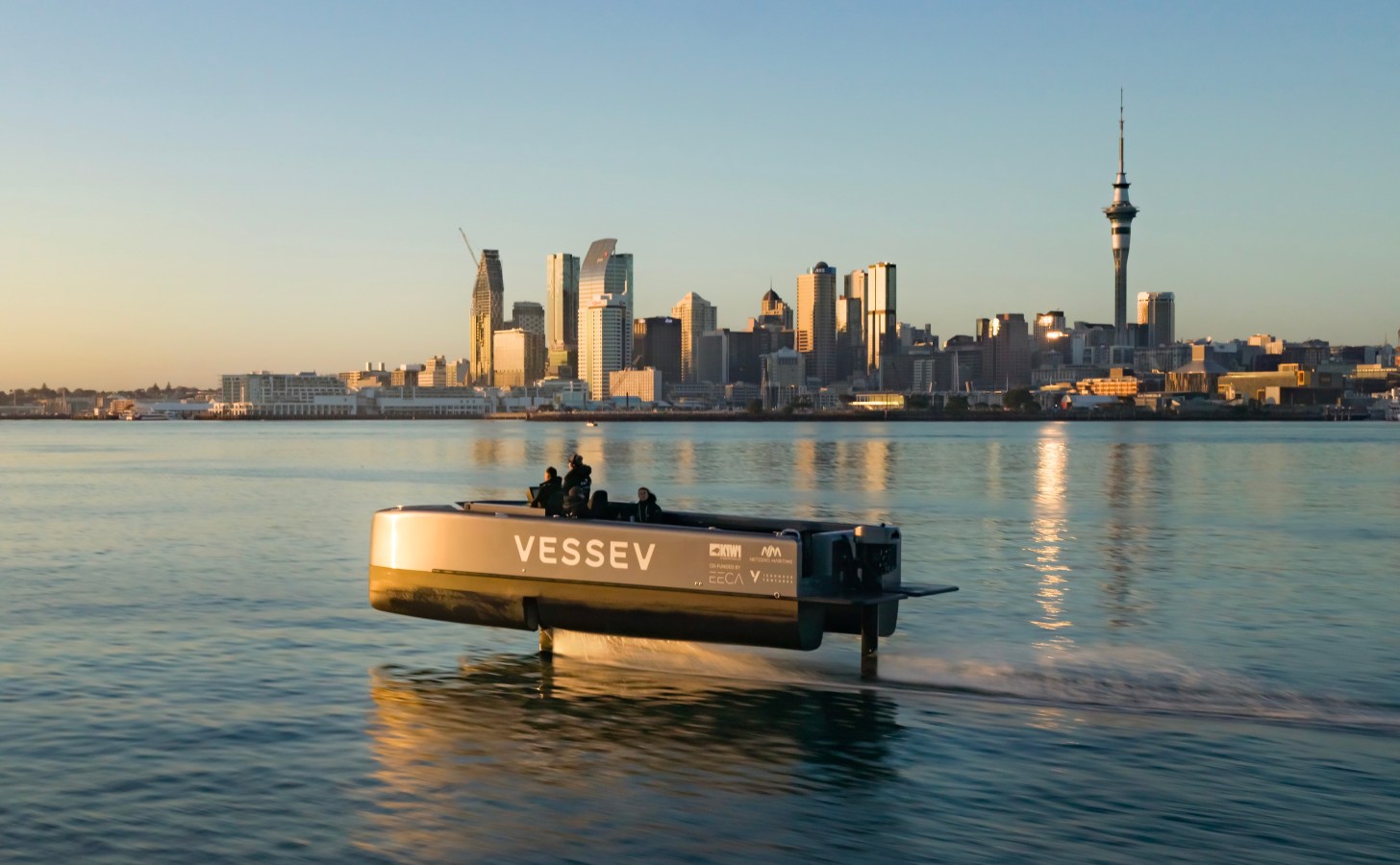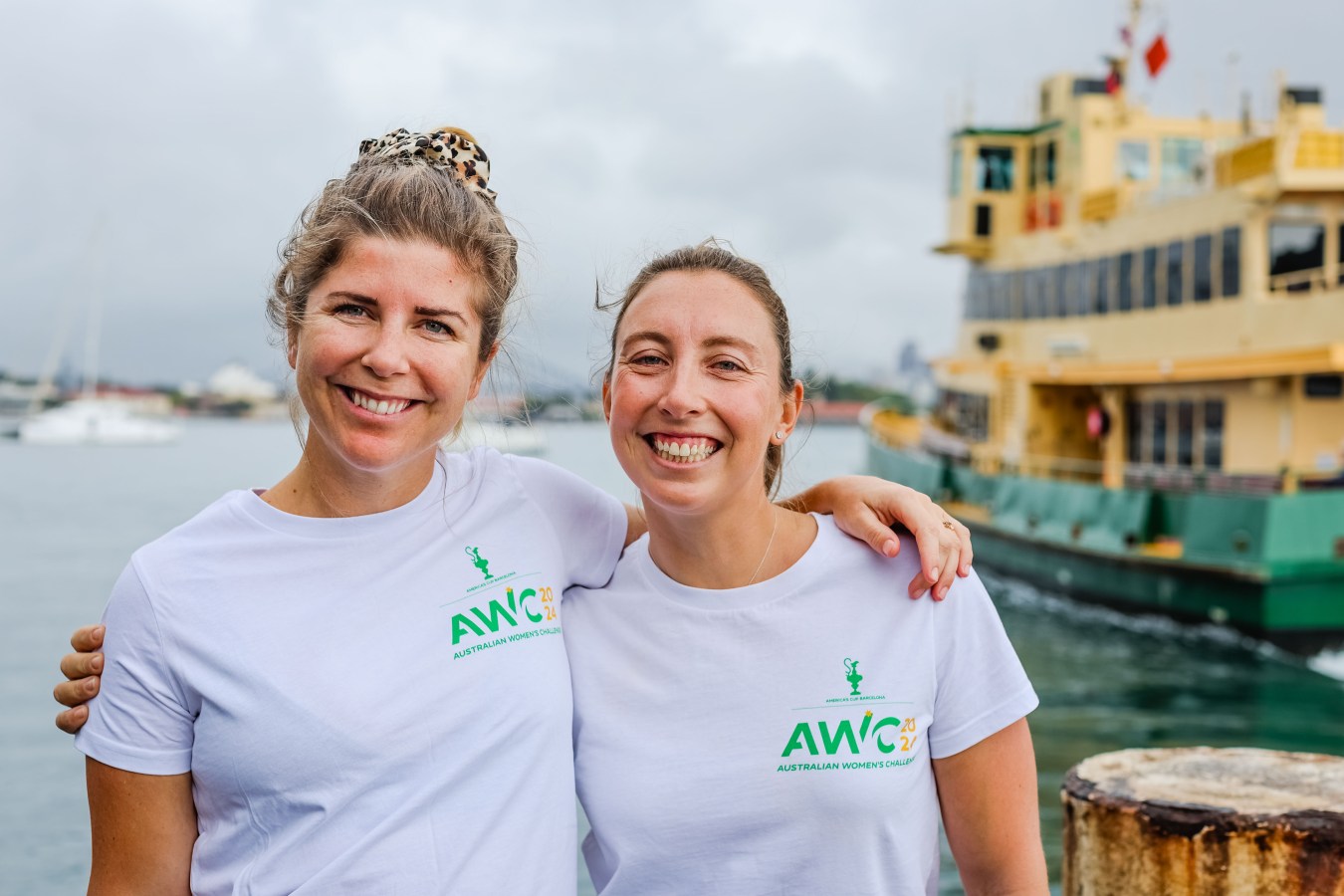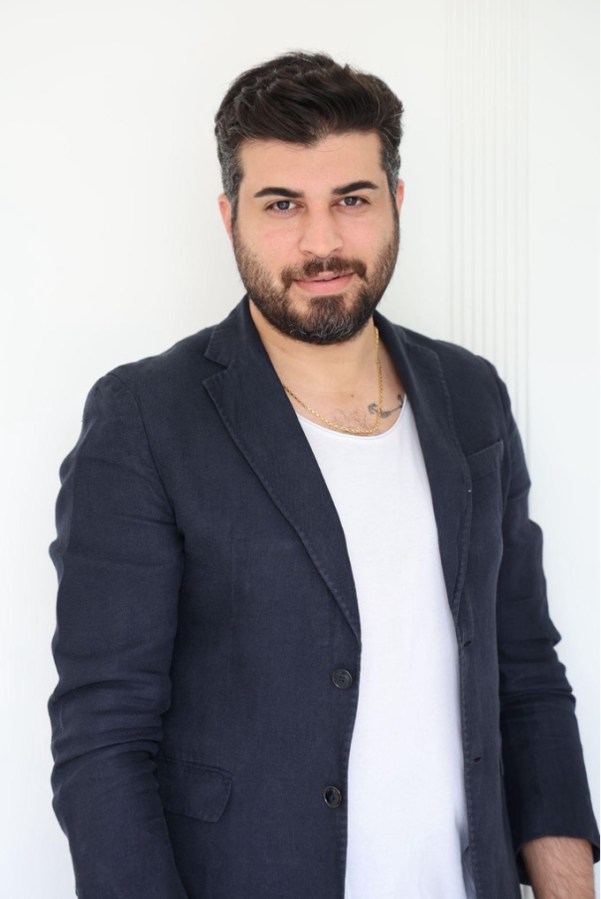New Zealand-based technology start-up Vessev aims to revolutionise marine passenger transport. It expects its VS-9 tourism vessel to be commercialised through a partnership with the country’s largest ferry operator this year.
This story featured in Issue 12 of Forbes Australia. Tap here to secure your copy.
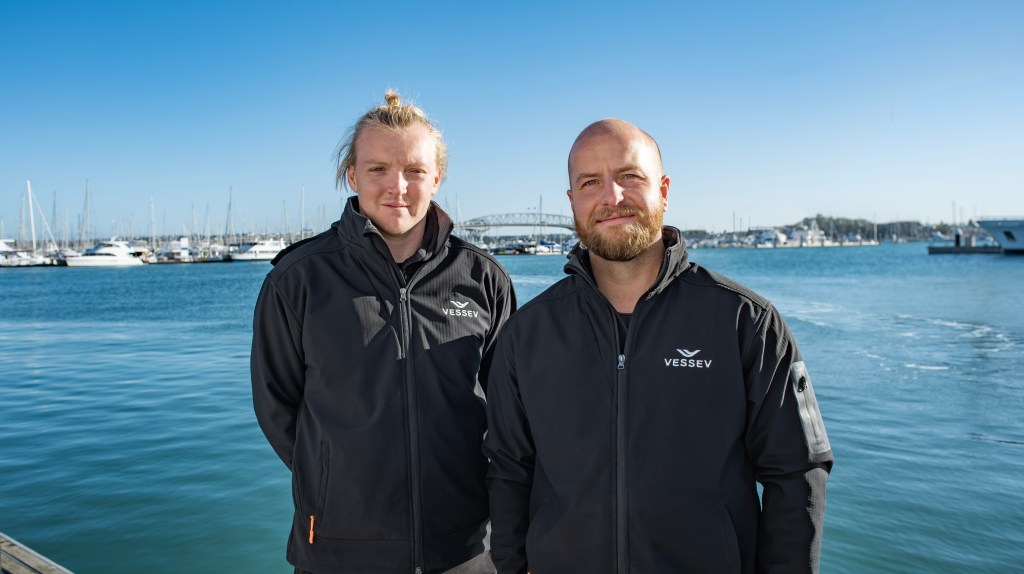
In September 2013, at the 34th America’s Cup, racing changed forever: cup defenders, Emirates Team New Zealand, had shot out the gate with an AC72 catamaran that seemingly flew on top of the water. But it wasn’t flying, it was hydrofoiling. Ultimately, Team New Zealand lost, but for top-level racing, there was no going back.
“It forced the entire world to adapt,” Vessev chief executive Eric Laakmann says. “New Zealand is a world leader in hydrofoiling technology through America’s Cup and SailGP.”
Blackbird-backed technology start-up Vessev (formerly Seachange) was born out of Auckland in 2018 by then 23-year-old engineering wunderkind Max Olson, now its chief technology officer. Its mission is to revolutionise marine passenger transport with electric hydrofoiling vessels.
Laakmann – an ex-engineering program lead for the original Apple Watch – joined the team in 2021 as its CEO and steered the company to its launch of the VS-9 – the world’s first fully-electric passenger vessel to operate in Auckland and what it claims is the first hydrofoiling tourism vessel in the world.
“I left Apple to fulfil my lifelong dream of sailing around the world,” Laakmann says. “I arrived in New Zealand right before COVID-19 and got stuck. But I didn’t realise New Zealand had this amazing tech scene. When I learned about Vessev, this was my first choice of where I wanted to work. I just thought the space was so exciting.”

The global marine vessel market was valued at US$152 billion in 2023 – and is projected to grow to US$250 billion by 2032, according to Fortune Business Insights. The maritime tech industry is a similar size.
But Vessev’s goal isn’t just technical; it’s sustainable: with more and more corporations looking to achieve net-zero goals, it was only a matter of time before vessel companies looked to make changes, too. New Zealand’s largest ferry operator and Vessev’s lead customer, Fullers360, for example, says it aims to be 100% electric or hydrogen-operated by 2040, with foiling a big part of that vision.
“There are 33 million vessels in the world today, and sustainable vessels represent the smallest fraction. Through significant enhancements in efficiency, hydrofoiling will play a key role in this once-in-a-generation shift,” Laakmann says.
From the foils to the control system and the custom electric actuator, the VS-9, unveiled in May this year, was designed and built in-house by Vessev’s 14-strong team at its 1500-square metre facility in Auckland.
“It would be like if our highways and streets were filled with stone, and we had to plough through it to get where we need to, and then suddenly you have something rolling on top.”
Eric Laakmann, CEO, Vessev
“If you want to make the best flying boats in the world, you have to make the best components yourself,” Laakmann says.
It will transport up to 10 passengers at a service speed of 25 knots, with a range of 50 nautical miles (92.6km). And because it’s flying above the waves, Vessev claims it’s a smoother and more stable ride than traditional passenger ferries can provide.
“We use techniques similar to America’s Cup vessels, which provide very high control authority compared to other systems. That means we can handle more wind and bigger seas,” Laakmann says. “The system is more difficult to engineer up-front, but results in a very performant vessel that is both more capable and efficient.”
Looking deeper at the vessel’s specs, Vessev says the VS-9 is so efficient it can be charged using existing electric charging infrastructure commonly available in most marinas. Once high-speed DC charging is in place, recharge times will be up to 0.8 nautical miles of range per minute charging.
That goes toward the cost point: Vessev tested its VS-9 against a petrol-power chaser boat doing the same motions and distance. At the end of each day, the cost of the petrol-powered chaser was 25 times the cost of the electricity used to charge the VS-9.
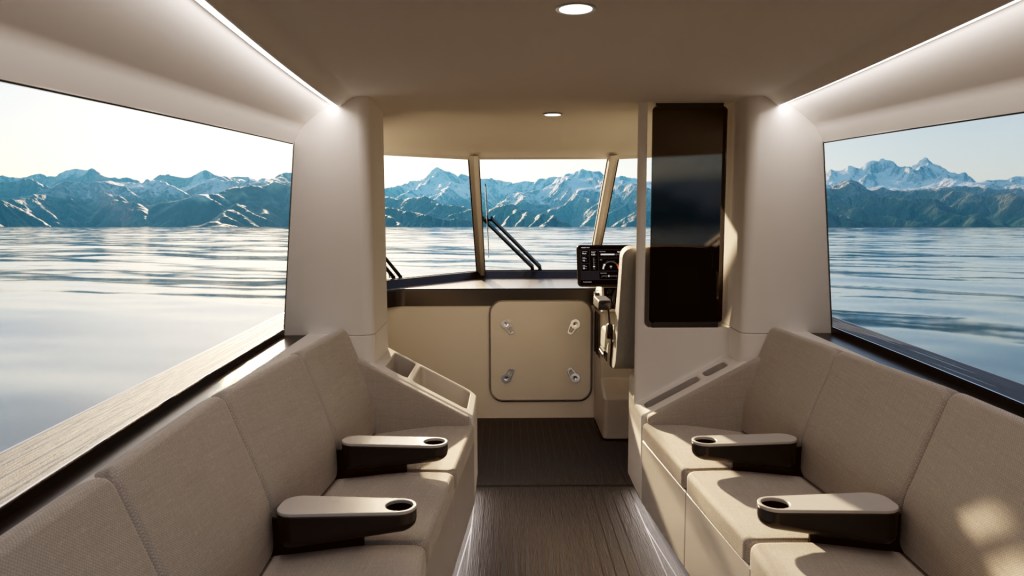
“From a sustainability standpoint, we can’t afford to have boats that use their energy pushing water around. You can see the turbulence that creates – very little of that energy is going towards forward motion. It would be like if our highways and streets were filled with stone, and we had to plough through it to get where we need to, and then suddenly you have something rolling on top.”
According to Vessev, the company has taken deposits for recreational vessels, and several VS-9s have already been sold at a starting price of US$620,000. It’s steep up-front, but the company says its technology reduces energy consumption by up to 95%, significantly reducing operational costs in the long term.
“This is a uniquely New Zealand team who benefit from decades of cutting-edge innovation in building the world’s most efficient marine vessels, with the global ambition to create the Rivian or Tesla of boats.”
Phoebe Harrop, Partner, Blackbird
Since the vessel’s launch, Laakmann says it’s a bit like September 2013 again.
“We’ve had so many people in our network who have said, ‘This is the future. You can’t go back’,” he says. “From an experience standpoint, it’s as if you had cars with no suspension, and suddenly you have a car with active suspension.”
The VS-9 is still being tested out of Auckland, but once it is certified, Vessev says the it will be in commercial service through its partnership with Fullers360. The company is currently working to develop the VS-18 – a 100-passenger vessel that uses the same technology and design as the VS-9 – which will have additional seakeeping capabilities.
And investor, Blackbird Partner Phoebe Harrop, says Vessev is slowly changing the game in marine transport – thanks to Olson and Laackmann.
“Max and Eric are an unstoppable team: Eric is a magnetic CEO with proven ability to rally the troops to deliver on Vessev’s goals on time and on budget, and Max is a brilliant engineer, leading a Swiss Army knife team of engineers across composites, mechanical and control systems specialties,” Harrop says.
“This is a uniquely New Zealand team who benefit from decades of cutting-edge innovation in building the world’s most efficient marine vessels, with the global ambition to create the Rivian or Tesla of boats. If Vessev can successfully scale their product, the opportunity to become the world’s foremost vertically integrated commercial vessel producer is enormous.”
While Laakmann claims the company is one of the most capital-efficient hardware companies in New Zealand, having built the VS-9 with NZ$3.6 million in equity, building boats is no easy – or cheap – task. The company is set to raise capital again in July this year, a round it says it’s partially filled already and may have closed by the time this magazine hits news stands.
After the VS-18, it’s time to scale.
“This last period has been about proving ourselves and showing that we can deliver this technology that can change the world,” Laakmann says. “The next period is about scaling up that nine-metre we’ve delivered and going much larger. We’re not going to get to the Apple-level of mass manufacturing, but there’s a lot that we can borrow from there.”
Look back on the week that was with hand-picked articles from Australia and around the world. Sign up to the Forbes Australia newsletter here or become a member here.

